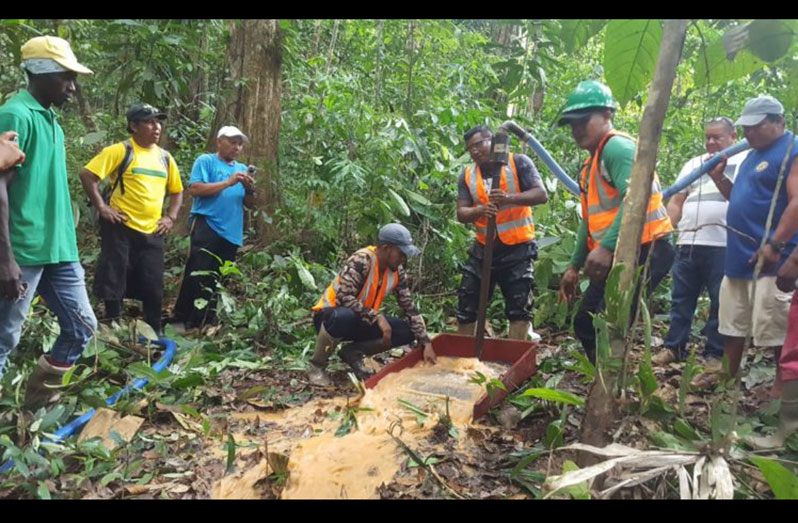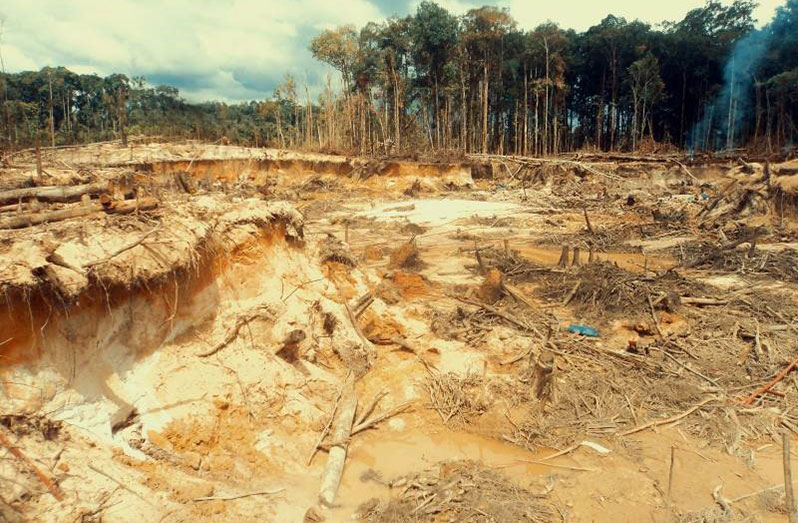Mining is the extraction (removal) of minerals and metals from earth.
Minerals that are mined include manganese, tantalum, cassiterite, copper, tin, nickel, bauxite (aluminum ore), iron ore, gold, silver, and diamonds. Other natural resources that are mined include coal, sand, and petroleum.
Mining has proven to be a very lucrative enterprise as minerals and metals are valuable resources that have extremely high market values and are used in our daily lives.
Fast fact about mining
* The oldest known mine on archaeological record is the “Lion Cave” in Swaziland, which radiocarbon dating shows to be about 43,000 years old. At this site paleolithic humans mined hematite to make the red pigment ochre.
Types of mining
1. Dredging
This is a high-volume mining technique for low-value products near a plentiful source of water. Scoops/buckets are used to extract material from shallow water (often man-made lagoons). A high-tech variation of this is undersea mining, where the material is sucked from the seafloor (although the only successful application of this to date has been for gem diamonds in shallow waters).

2. Surface-Mining
Called ‘Open-cast’ if soft-rock mining (e.g. coal or limestone) and ‘Open-pit’ if hard-rock mining (e.g. copper and diamonds). The mining process is fundamentally different between these soft and hard-rock operations. The former operations are usually rectangular in general shape (and advance along the seam, with waste infill behind as they advance) while the latter are oval.
Surface mines normally only extend to a depth of about 200 m, below which it is usually cheaper to extract the metal from underground.
Hard-rock surface mining is dominated by drilling/blasting and then lifting the broken ore into trucks or onto conveyors for transportation to the processing plant. This lifting is usually by an excavator (electric or hydraulic; with a shovel or backhoe configuration) or front-end loader. The softer rocks can be recovered directly by using very powerful excavators (including the huge bucket-wheel machines).
3. Underground Mining
Access is via vertical shafts or inclined roadways (adits). There are usually two access routes (one for men and materials, and one for the ore) for safety and for ease of ventilation (fresh air comes in one and is then exhausted out of the other).
Once at the correct depth, horizontal tunnels are driven to reach the ore deposit. These are permanent structures so they require strong roof supports (often including ‘bolts’ into the rock to tie the layers together for strength).
4. Insitu Mining
There are two main types of insitu mining; solution and thermal.
* Solution – Involves the injection of water down drill holes into soluble deposits (most commonly salt). The mineral-rich solution is then pumped back to the surface.
* Thermal – Although only still at the research stage, it is theoretically possible to burn coal insitu (by creating cracks, then injecting oxygen and a heat source), and recovering the resultant heat (in effect, an underground power station without going to the trouble of extracting the coal). This has happened spontaneously in numerous areas (particularly in India) but the difficulty has always come in controlling the burning process.
Mining and the environment
The Bad
Mining is generally very destructive to the environment. It is one of the main causes of deforestation. In order to mine, trees and vegetation are cleared and burned. With the ground completely bare, large scale mining operations use huge bulldozers and excavators to extract the metals and minerals from the soil. To amalgamate (cluster) the extractions, they use chemicals such as cyanide, mercury, or methylmercury. These chemicals go through tailings (pipes) and are often discharged into rivers, streams, bays, and oceans. This pollution contaminates all living organisms within the body of water and ultimately the people who depend on the fish for their main source of protein and their economic livelihood.
Small Scale Mining is equally devastating to the environment, if not more. Groups of 5-6 men migrate from one mining site to another in search of precious metals, usually gold. There are two types of small scale mining: land dredging and river dredging:
 * Land dredging involves miners using a generator to dig a large hole in the ground. They use a high-pressure hose to expose the gold-bearing layer of sand and clay. The gold-bearing slurry is pumped into a sluice box, which collects gold particles, while mine tailings flow into either an abandoned mining pit or adjacent forest. When the mining pits fill with water from the tailings, they become stagnant water pools. These pools create a breeding ground for mosquitoes and other water-borne insects. Malaria and other water-bourne diseases increase significantly whenever open pools of water are nearby.
* Land dredging involves miners using a generator to dig a large hole in the ground. They use a high-pressure hose to expose the gold-bearing layer of sand and clay. The gold-bearing slurry is pumped into a sluice box, which collects gold particles, while mine tailings flow into either an abandoned mining pit or adjacent forest. When the mining pits fill with water from the tailings, they become stagnant water pools. These pools create a breeding ground for mosquitoes and other water-borne insects. Malaria and other water-bourne diseases increase significantly whenever open pools of water are nearby.
* River dredging involves moving along a river on a platform or boat. The miners use a hydraulic suction hose and suction the gravel and mud as they move along the river. The gravel, mud, and rocks go through the tailings (pipes) and any gold fragments are collected on felt mats. The remaining gravel, mud, and rocks go back into the river but in a different location than where it was originally suctioned. This creates problems for the river. The displaced gravel and mud disrupt the natural flow of the river. Fish and other living organisms often die and fishermen can no longer navigate in the obstructed rivers.
How does mining affect people?
1. The people who are exposed to the toxic waste from the tailings become sick. They develop skin rashes, headaches, vomiting, diarrhoea, etc. In fact, the symptoms of mercury poisoning are very similar to the symptoms of malaria. Many people who cannot afford to go to a doctor or who live in a village where a doctor is not accessible are often not treated for their illnesses.
2. If the water is contaminated, it cannot be used for domestic purposes.
3. Displacement of the family unit by miners who leave their families to seek employment.
4. Theft, drugs/alcohol, prostitution, rape, and sexual abuse are, unfortunately some of the effects of mining.
5. Cultural degradation also occurs in mining villages. For example, mining often destroys sacred sites and cemeteries. Unfortunately, in Guyana, a special fishing event called Haiari Fishing cannot take place if the river has been dredged for gold. The displacement of the gravel and mud obstruct the natural flow of the river. As a result, fish and other organisms die.
The Good
1. Provides employment, both directly in the mining industry & also elsewhere as the mine employees spend their income.
2. Provides minerals/metals that can be either exported or avoids the import of these minerals/metals from other countries.
3. Provides infrastructure (roads, electricity, telephone etc.) to remote areas of the country where mines are located, which are needed by the mines. When the mines are exhausted, the infrastructure remains others can use that.
Although, there are negative environmental effects, these can be minimised if proper environmental guidelines/ practices and technologies are adapted and rigidly enforced. Mining companies in most countries are required to follow stringent environmental and rehabilitation codes to minimise environmental impact and avoid impacts on human health. These codes and regulations all require the common steps of Environmental Impact Assessment, development of Environmental Management Plans, Mine Closure planning (which must be done before the start of mining operations), and environmental monitoring during operation and after closure.
If you would like to find out more about mining, you can log on to http://kids.mongabay.com/lesson_plans/lisa_algee/mining.html, http://ggmc.gov.gy/mines.html, http://www.searchmining.net/mininginfo/mining101/mining.asp
You can share your ideas and questions by sending letters to: “Our Earth, Our Environment”, C/O ECEA Programme, Environmental Protection Agency, Ganges Street, Sophia, GEORGETOWN, or email us at: eit.epaguyana@gmail.com. Follow us on Facebook and Instagram and subscribe to our YouTube channel.



.jpg)








